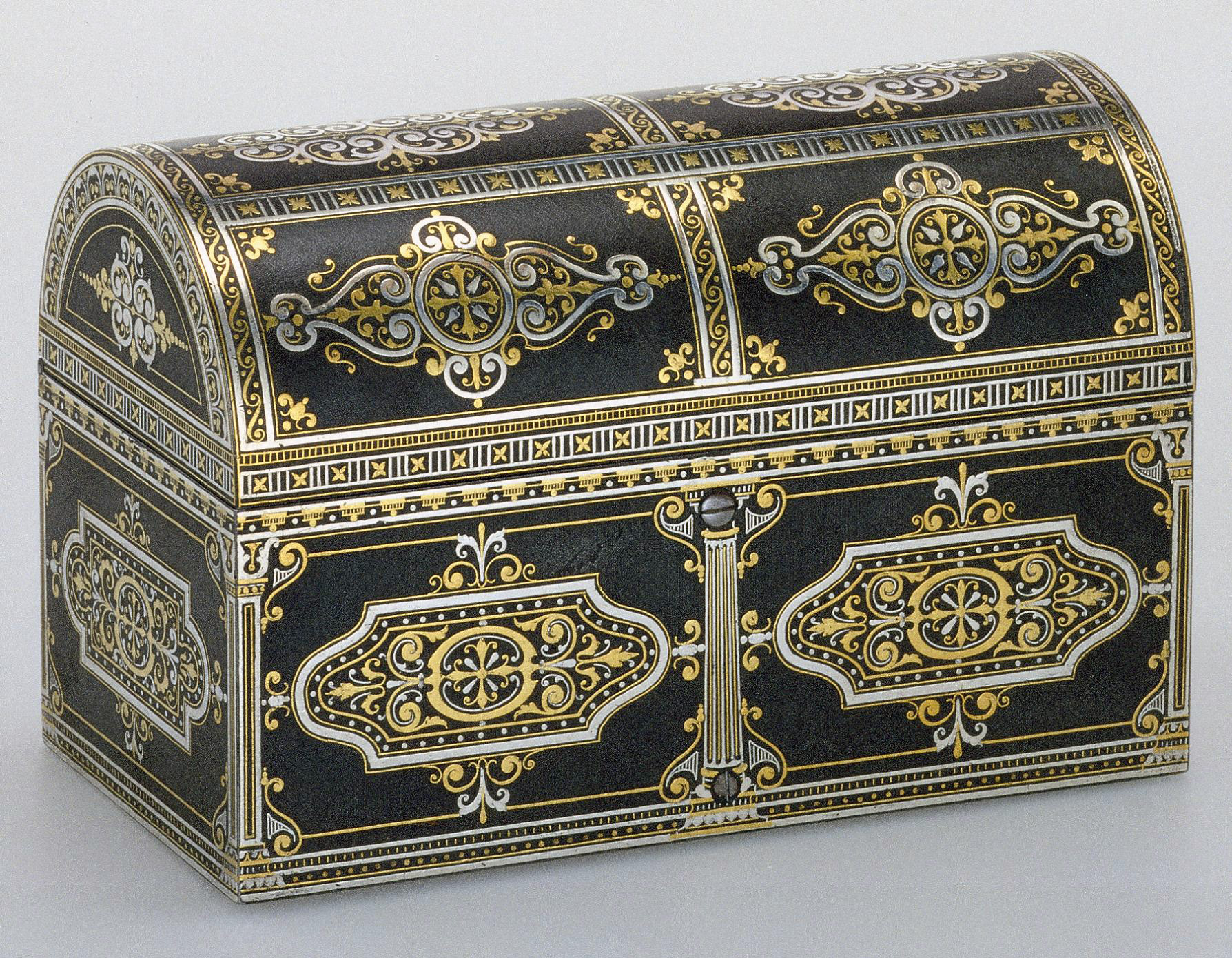 Print Page
Print Page
 Print Page
Print Page
Location: Spain, Eibar
Materials: forged iron damascened in gold and silver
Dimensions: 8.8 x 13.4 x 7 cm
Accession Number: ZUL 3
Other Notes:
The damascene ornament, applied over a finely hatched and blackened ground, corresponds in general to what has already been encountered on Plácido’s small caskets. However, in this instance the lid and base contain totally different sets of decorative elements, so that these two parts are not united into a coherent whole.
The top is divided into six panels divided and bordered horizontally by narrow bands containing small gold St. Andrew’s crosses (aspas), the arms of Eibar, alternating with silver vertical lines. Similar vertical divisions contain gold wave scrolls. The upper panels, including the ends, contain foliate decoration loosely composed in horizontal diamond shape. The four lateral panels, excluding the ends, are composed around circles containing a cross.
The lower body of the casket is divided into six panels including the ends, enclosing severely outlined lozenges having as their central element opposing C-scrolls surrounding crosses. The vertical divisions of the panels are formed as fluted columns having very simplified acanthus capitals, belonging to no conventional order and showing only one or two large leaves. Plácido employs this same feature in the round on the capitals of the shrine ZUL 95. The only unifying element on the upper and lower halves of the casket is the cross at the centre of ten of the panels.
The casket was made without hasp, handles, or feet. Its lid is secured by a slotted button.
Bibliography:
J. D. Lavin (ed.), The Art and Tradition of the Zuloagas: Spanish Damascene from the Khalili Collection, Oxford 1997, cat. 12, p. 98.
